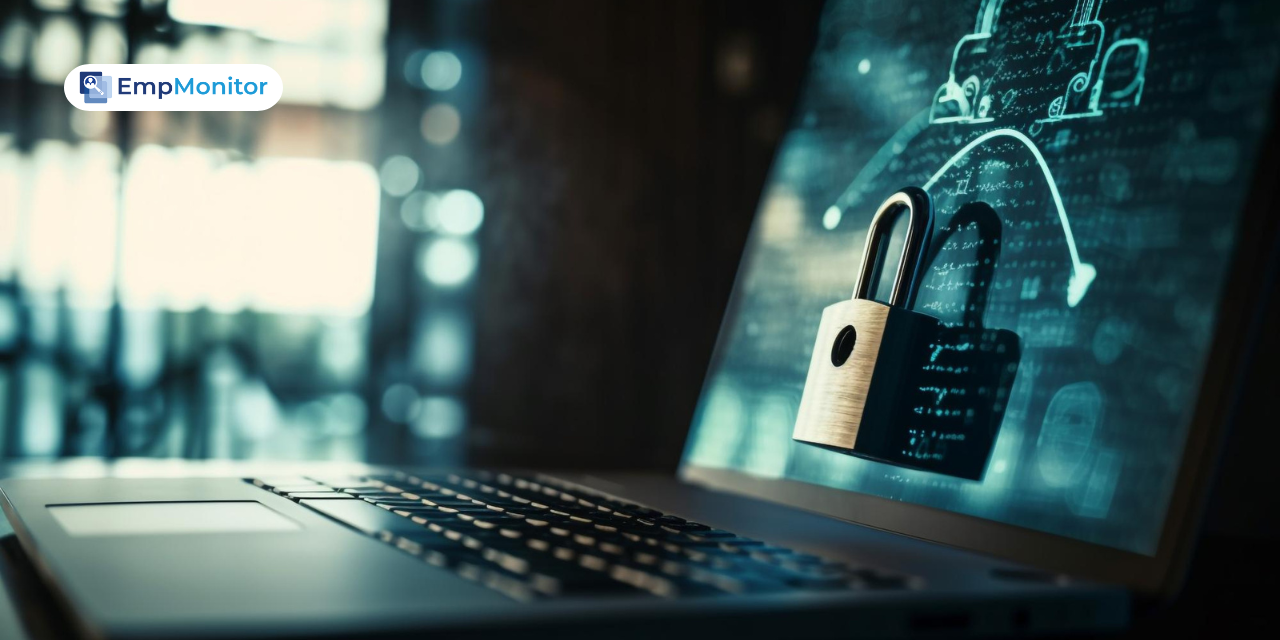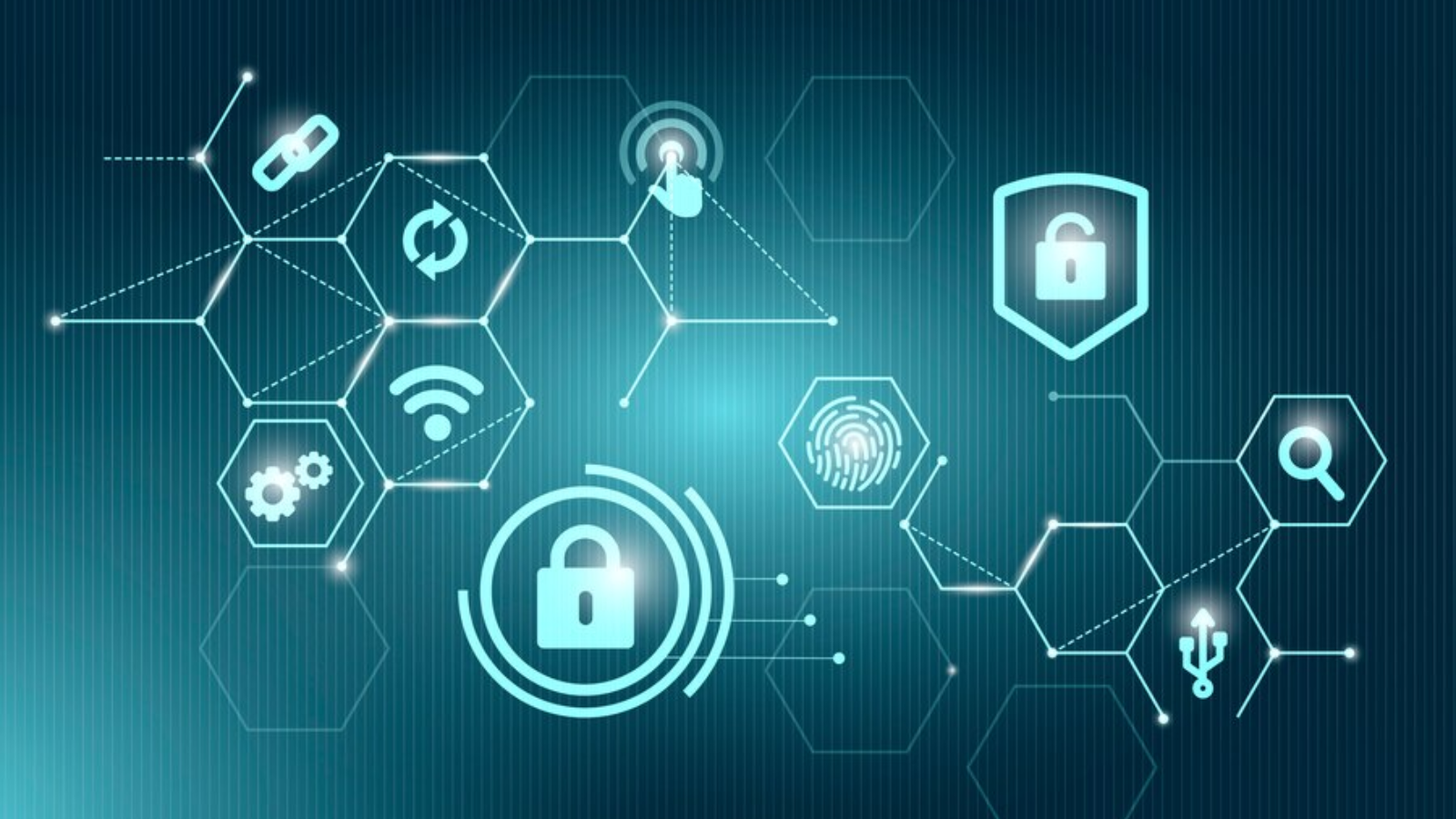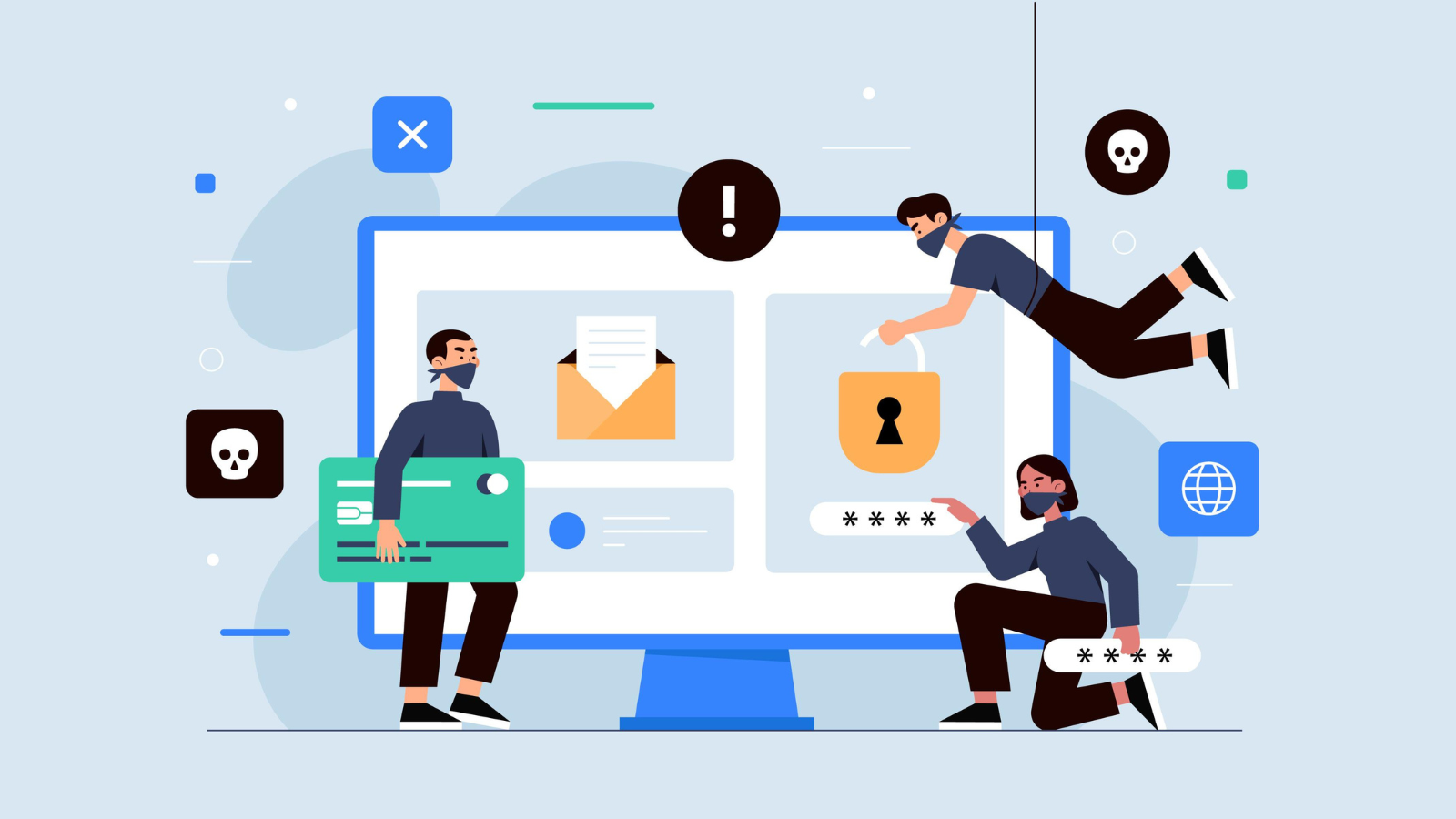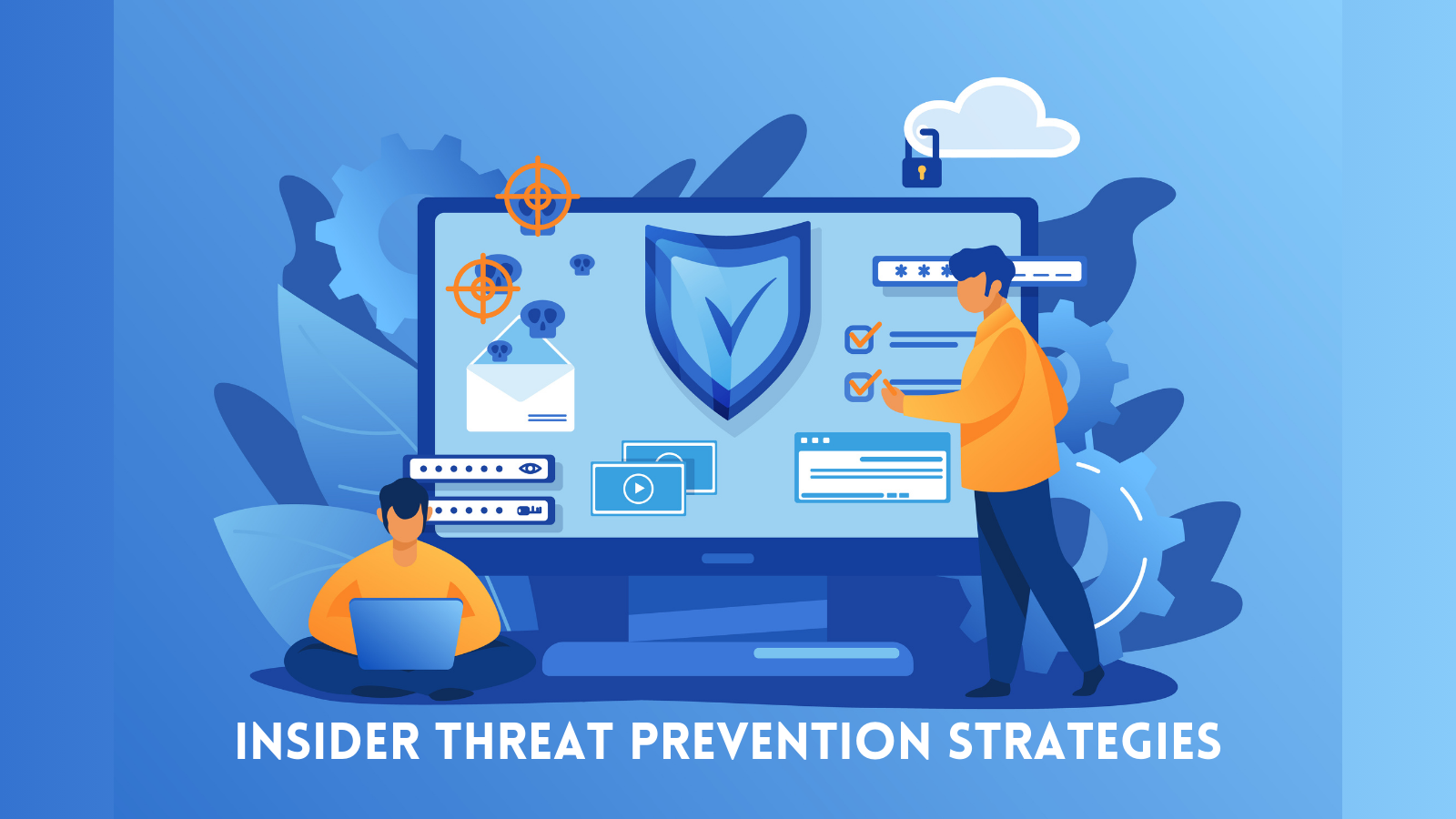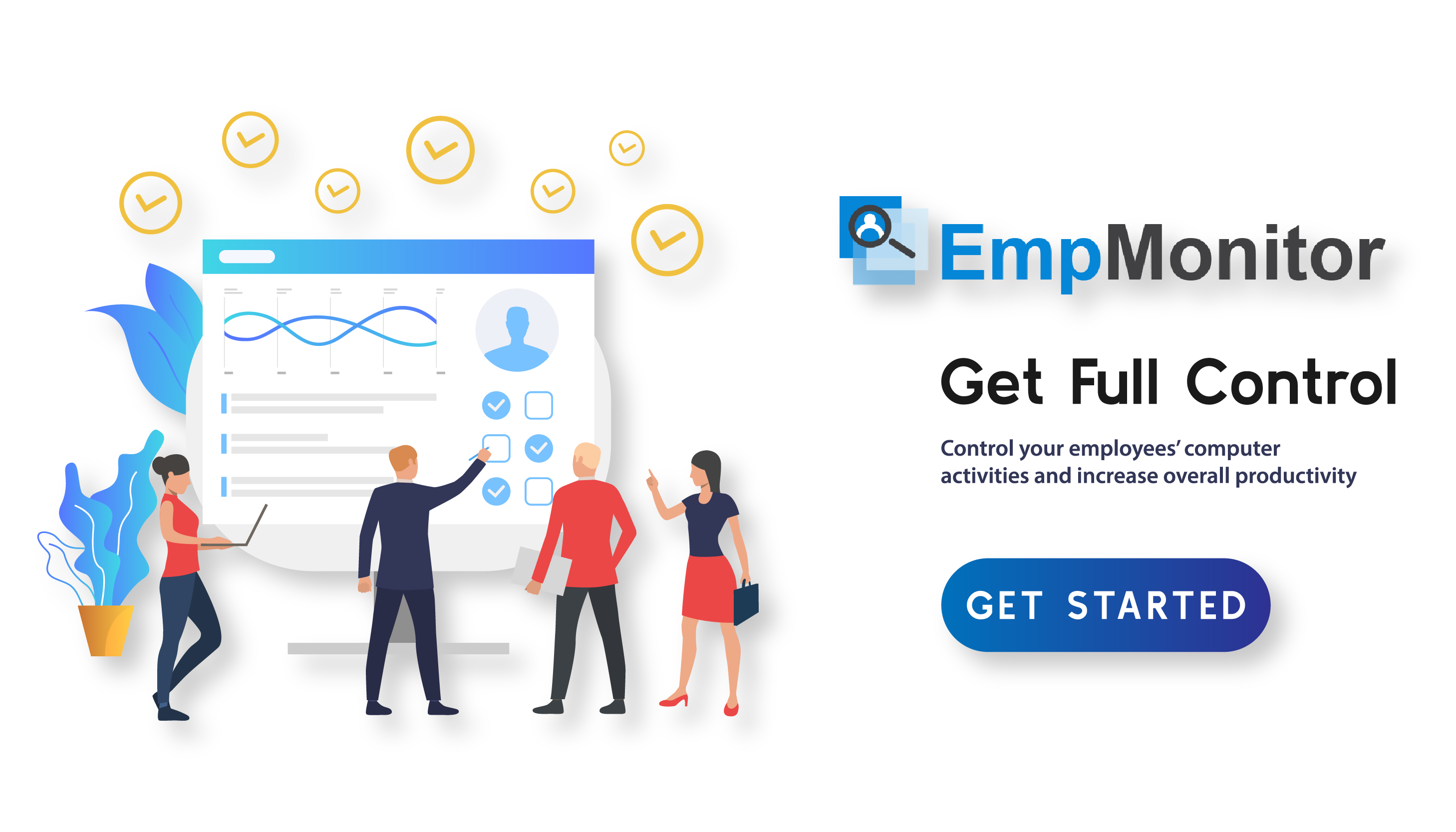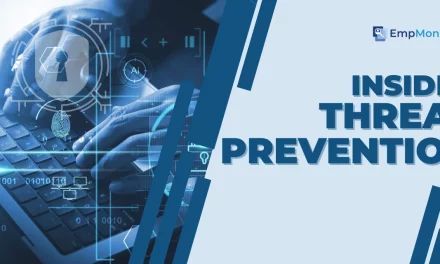Have you ever considered the potential risks within your organization, especially when most of the attention is on external cyber threats? An insider threat occurs when employees within your company misuse their access to sensitive information for malicious purposes. How do you protect your trade secrets from spies and moles? That’s where insider threat prevention comes in.
As a manager or leader, it’s crucial to balance between keeping things confidential and ensuring smooth operations. In this blog, we’ll cover the challenges your team might face. Sometimes, these problems aren’t on purpose and can happen by mistake.
Throughout this blog, we’ll help you understand different types of insider threats and their consequences and show you ways to stop them. Workforce management software is one tool that can help, acting like special glasses to see what your team is up to. With these tools, you can catch issues early and make your company more secure. Let’s dive in now!
Hit ‘Play’ Button & Tune Into The Blog!
What Is An Insider Threat?
An insider threat refers to the potential for individuals within an organization to misuse their access and privileges to compromise the confidentiality, integrity, or availability of the organization’s data, systems, or networks.
These individuals may be employees, contractors, or business partners having insider information concerning the organization’s security practices, data, and computer systems.
Types of Insider Threats:
Before we get into insider threat prevention, it’s crucial to understand the different types of insider threats. There are several categories of insider threats that organizations commonly face, each with its characteristics and potential risks:
Malicious Insiders:
These individuals intentionally act against your company’s interests, aiming to cause harm to the organization. This group includes;
- Disgruntled Employees: Those with personal grievances or dissatisfaction who may seek revenge or cause disruption.
- Moles: Individuals planted within the organization to gather and pass on sensitive information to external entities.
Negligent Insiders:
While not intentionally malicious, negligent insiders pose a risk through unintentional actions. This category encompasses;
- Employees who inadvertently expose confidential information, often due to accidental mishandling of data.
- Individuals who fall victim to phishing scams or social engineering tactics.
- Those who neglect security protocols can also lead to potential vulnerabilities.
Third-Party Insiders:
External entities, such as contractors, vendors, or partners, can also pose insider threats. It could involve unauthorized access, data breaches, or compromised systems through third-party connections.
Recognizing the diversity of insider threats is the first step toward building a robust prevention strategy. Understanding the motivations and methods employed by potential threats can help organizations tailor their insider threat prevention measures to address specific vulnerabilities.
What Are The Consequences Of Insider Threats?
Understanding the potential harm inflicted by insider threats is crucial for organizations seeking effective insider threat management. These threats can manifest in various ways, impacting both the immediate and long-term well-being of a company.
Data Breaches and Loss of Intellectual Property:
Malicious insiders, including disgruntled employees and moles, may intentionally compromise sensitive data or steal intellectual property. It can result in data breaches, financial losses, and damage to the organization’s reputation.
Operational Disruption:
Disgruntled employees with malicious intent can disrupt daily operations intentionally. It may include sabotaging systems, deleting crucial files, or causing downtime, leading to financial losses and declining overall productivity.
Reputation Damage:
Insider threats have the potential to tarnish an organization’s reputation. Whether through intentional actions or negligence, data breaches or compromised information incidents can erode trust among clients, partners, and stakeholders.
Legal and Regulatory Consequences:
Reckless insider threat prevention can cause mishandling of sensitive information or data breaches that can lead to legal and regulatory consequences. Organizations may face fines, lawsuits, and damage to their standing in the industry.
Financial Losses:
The aftermath of an insider threat incident often involves financial repercussions. It may include the costs of investigating the incident, implementing corrective measures, and recovering from operational disruptions.
Indicators Of Insider Threats
Effectively identifying potential insider threats involves recognizing both behavioral and digital indicators. Understanding these signs helps organizations address risks and improve insider threat mitigation.
Behavioral Indicators:
- Dissatisfaction or Disgruntlement: Signs of discontent from employees, contractors, or partners.
- Attempts to Circumvent Security: Individuals trying to bypass security measures.
- Irregular Working Hours: Regular off-hour work without clear justification.
- Resentment Towards Co-workers: Displays of resentment or conflicts with colleagues.
- Routine Policy Violations: Consistent violations of organizational policies.
- Contemplating Resignation: Employees discussing leaving or exploring new opportunities.
Digital Indicators:
- Unusual Network Sign-ins: Logging into networks at abnormal times.
- Surge in Network Traffic: Unexplained spikes in data transfer volume.
- Unauthorized Access to Resources: Accessing unrelated or restricted resources.
- Repeated Requests for Unnecessary Access: Consistent requests for irrelevant system access.
- Use of Unauthorized Devices: Unauthorized device usage, like USB drives.
- Network Crawling and Sensitive Information Search: Deliberate search for sensitive information.
- Emailing Sensitive Information Externally: Sending sensitive data outside the organization.
Organizations can guarantee a thorough approach to preventing insider threats by combining behavioral and digital indicators to improve efficiency in detecting insider threats. In the upcoming sections, we’ll explore comprehensive strategies and tools to address these indicators, strengthening your organization’s insider threat prevention efforts.
11 Strategies To Strengthen Insider Threat Prevention
Effectively identifying potential insider threats requires a proactive and comprehensive approach. Organizations can employ various strategies, tools, and technologies to enhance insider threat prevention efforts. Here are some tips on how to prevent insider threats:
Privileged Access Management:
Privileged Access Management (PAM) involves restricting access to sensitive systems and data to only those employees who require it to perform their job duties. By implementing PAM solutions, organizations can reduce the risk of insider threats by controlling and monitoring privileged user access, enforcing least privilege principles, and implementing robust authentication mechanisms. Additionally, regularly reviewing and updating access privileges ensures that employees have access only to resources essential for their roles, further enhancing security measures, mitigating potential risks, and protecting data from insider threats.
Activity And Behavior Monitoring:
Implementing behavior and activity monitoring solutions is essential in insider threat prevention for detecting anomalies in employee activities. These solutions analyze actions such as irregular working hours, policy violations, and access patterns outside the norm.
Additionally, by employing activity monitoring to track employee actions on company networks, organizations can quickly identify any unusual or unauthorized behavior. It includes monitoring file access, application usage, and data transfers. This comprehensive approach strengthens their security posture against insider threats.
Use workforce monitoring tools like EmpMonitor to analyze real-time user activity and identify deviations from expected behavior.
EmpMonitor: A Comprehensive Solution for Insider Threat Prevention
EmpMonitor is a workforce management software that plays a pivotal role in safeguarding organizations against insider threats, offering a comprehensive suite of features tailored to enhance security and productivity. In today’s digital landscape, where the risks of insider threats are ever-present, EmpMonitor stands as a vital tool for insider threat prevention.
From real-time user activity insights to ensuring authorized access and preventing data breaches, EmpMonitor equips organizations with the necessary capabilities to identify and mitigate insider threats effectively.
Here’s a brief overview of its key features:
- Real-Time User Activity Insights: Provides real-time insights into user activities, enabling proactive identification of anomalies.
- Advanced Behavior Monitoring: Employs advanced features to comprehensively track and analyze employee actions, including file access and application usage.
- Time-Tracking and Productivity Analysis: Offers time-tracking capabilities for monitoring work hours and assessing productivity levels.
- Secure Endpoint Monitoring: Keeps a close eye on individual devices, ensuring authorized access and preventing data exfiltration.
- USB Detection with DLP Integration: Integrates seamlessly with Data Loss Prevention (DLP) systems, featuring USB detection to prevent data breaches.
- Keylogger and Screenshot Monitoring: Enhances security with keylogger functionality and periodic screenshot capture.
- Attendance Management: Facilitates seamless attendance tracking, ensuring accurate timekeeping and adherence to work schedules.
- Insightful Reporting: Generates insightful reports on employee activities, aiding decision-making and continuous improvement.
Develop Comprehensive Policies:
Comprehensive policies and procedures should outline acceptable system usage, data access protocols, and information security standards. It’s crucial to articulate responsibilities for data protection, ensuring all employees understand their roles.
Employee Background Checks:
Conducting thorough background checks during the hiring process is essential for insider threat prevention, as it helps screen out individuals with a history of malicious behavior or who may pose a risk to the organization’s security. By verifying credentials and employment history, organizations can reduce the likelihood of insider threats from malicious insiders or individuals with ulterior motives.
Data Loss Prevention (DLP) Solutions:
Implementing Data Loss Prevention (DLP) solutions enables organizations to monitor, detect, and prevent the unauthorized transmission or exfiltration of sensitive data by insiders. These systems help monitor and control the movement of sensitive data within and outside the organization, preventing accidental or intentional data leaks.
Employee monitoring software like EmpMonitor, with built-in DLP features, can be implemented for enhanced security measures.
Network Traffic Analysis:
Analyzing network traffic and communication patterns in real time can help organizations identify suspicious activities or unauthorized access attempts by insiders. By monitoring network traffic and correlating it with known threat indicators, organizations can effectively detect and respond to insider threats.
Conducting regular network traffic analysis enables the identification of unusual patterns, such as a surge in data transfer volume or attempts to access restricted resources. This proactive approach enhances security measures and mitigates potential risks associated with insider threats.
Employee Training and Awareness:
Training and awareness programs are essential in insider threat prevention, enabling employees to stay informed about the latest security threats and best practices. Conducting regular training sessions, distributing newsletters, and organizing security awareness campaigns can help organizations foster a culture of security consciousness. It empowers employees to recognize and report potential insider threats effectively.
Continuous Monitoring of Third-Party Access:
Third-party vendors and contractors often have access to sensitive systems and data, making them potential vectors for insider threats. Organizations can reduce the risk of insider threats from external parties by implementing continuous monitoring solutions for third-party access as well as enforcing strict access controls and audit requirements.
Endpoint Security Solutions:
Endpoint security solutions encompass tools and technologies safeguarding individual devices like computers, laptops, and smartphones from diverse cyber threats like malware, ransomware, and phishing attacks. They are pivotal for insider threat prevention by detecting and preventing unauthorized access and data exfiltration, fortifying the security posture of networks against threats.
Strong Authentication and Authorization:
Implement multi-factor authentication (MFA) to add an extra layer of security to user accounts and prevent unauthorized access. Enforce strong password policies and regularly update credentials to reduce the risk of insider attacks, thus enhancing security threat prevention.
Data Encryption:
Data encryption involves encoding sensitive information when it is stored and transmitted, which reduces the likelihood of data breaches and unauthorized access.
Learn More
Insider Threat Detection: How ToIdentify And Prevent Internal Risk
How To Prevent Insider Data Breaches In Your Organisation?
How To Protect Your Data From Insider Threats?
Final Thoughts
Insider threat prevention is more than a buzzword—it’s crucial for safeguarding your digital realm. Striking the balance between confidentiality and seamless operations requires understanding the nuances of potential risks within your organization.
In this exploration, we’ve unveiled diverse insider threats and provided insights into robust prevention strategies. EmpMonitor, an advanced employee monitoring tool, emerges as a powerful ally, offering real-time insights, behavior monitoring, and seamless integration with security measures like DLP.
Stay proactive and informed, and let the synergy of technology and strategic measures fortify your organization against evolving insider threats. Let’s create a secure digital environment where productivity and security thrive.

